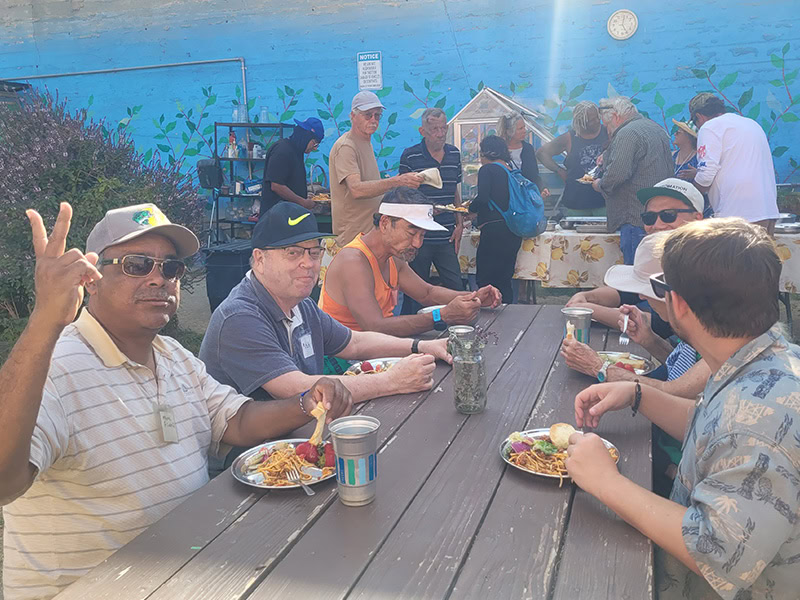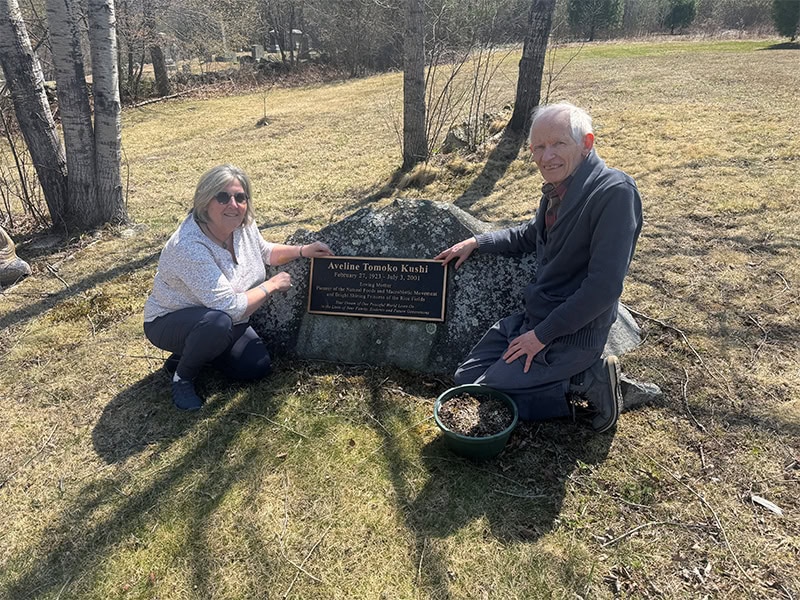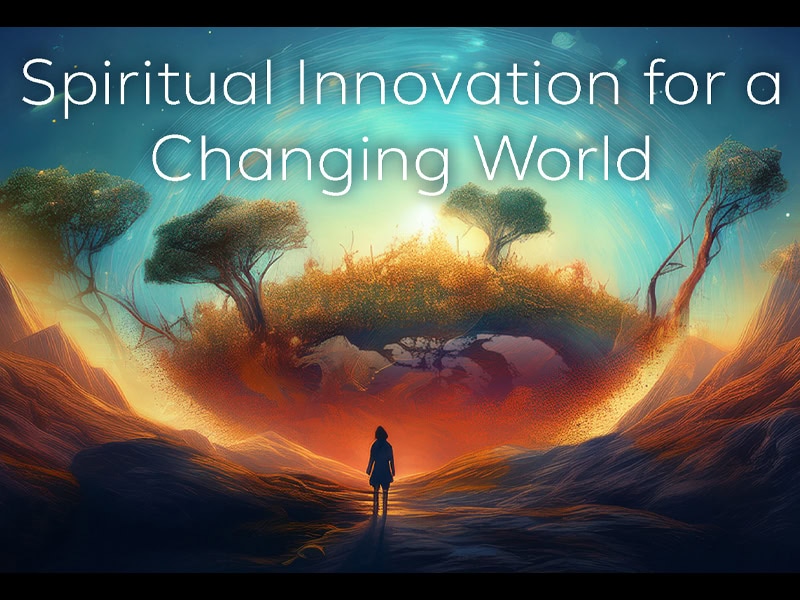By Rev. James H. Barry, Inductee
I have a sixty-five year old friend in Philadelphia who spoke of how he found a new life thirty years ago. We were talking on a spring evening in a gathering of friends at a neighborhood church. He told me when he was young, he was doing well. But, in his thirties a pattern of events revealed that he was conflicted, unhappy, and unconsciously self-destructive. This awareness brought him to the threshold of a total change in his life.
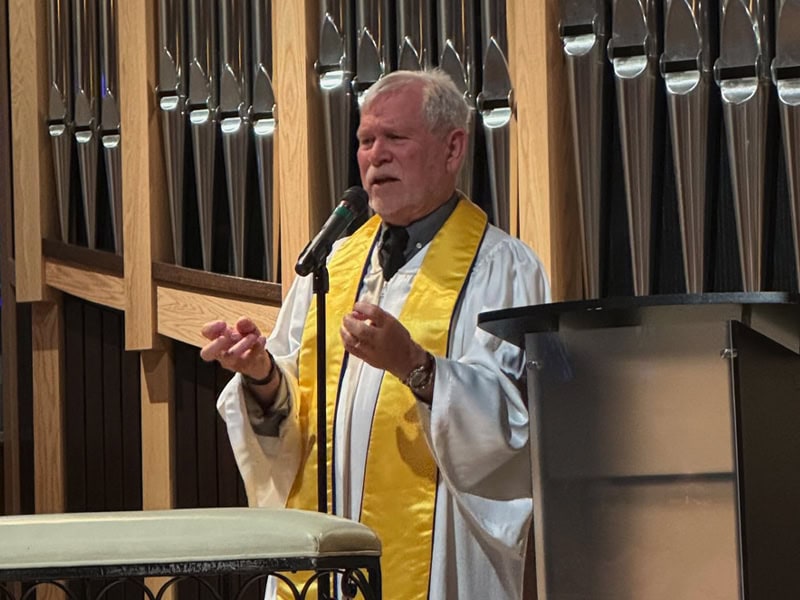
I was talking to him thirty years later. He was now a friendly, outgoing man, with a warm smile who was entering retirement after a successful career. In his new life, he had found spiritual connections, a community of friends, prayer and meditation, a healthy lifestyle, and a new vision of life. This is the way he described the turning point in his life:
I had a change of perception.
I would like to talk about that today. Our life, and our spiritual formation is dependent in many ways upon a change of perception. This moment of perception can be a sparkwhich fuels a new spiritual understanding of oneself and the world.
I’m sure that each one of us can reflect upon a time when we decided to move in a new direction. I am standing before you, having made such a big decision myself. It all depends upon choices we make—even in the midst of great challenges—which open up avenues of growth and change.
The Lord’s change of perception.
Swedenborg’s theology teaches that the Lord had the same experience when he walked among us. Like us, he experienced moments of perception to choose one path over another. This is illustrated in the Old Testament in the story of Abram and his brother Lot. Both brothers were wealthy, traveling together into a new land. As they traveled a conflict arose between them that became too much for Abram to bear.
And there was a strife between the herdsmen of Abram’s cattle and between the herdsmen of Lot’s cattle. And Abram said unto Lot, “Let there be no strife, I pray thee, between me and between thee and between my herdsmen and between thy herdsmen, for we are brethren. Is not the whole land before thee? Separate thyself, I pray thee; if thou wilt take the left hand, then I will go to the right; or if thou depart to the right hand, I will go to the left. (Genesis 13:7–9)
Abram’s story is much more than a historical narrative. Swedenborg’s theology magnifies the entire Old Testament as a deep and holy story of the Lord’s own spiritual journey as he was growing up. He does this by examining the spiritual meaning of every person, place, and thing in the Word.
In this particular story, Abram represents the internal mind of the Lord, and Lot represents something quite different, the external part: “the pleasure derived from sensory things, thus the most external things which usually captivate the mind in childhood and lead it away from the things that are good.”
Abram’s separation from Lot represented the Lord’s change of perception, his awareness that the spiritual direction he wanted to pursue was not consistent with purely external dreams and goals. The strife between the brothers signifies an inner conflict in the Lord’s mind. As they journeyed together southward, which signifies traveling to the “interior and in most things in the mind, where truth is in light,” the conflict increased.
Abram made the decision for Lot to go his way, and for his family and cattle to go on a new path. He had a change of perception and decided to move in a new direction. Abram did this, the Lord did this too, and so can we.
I am wearing something at this service that represents a change of perception on my part, a change that led me to the Convention. I was ordained fifteen years ago in this stole, which was hand-made for me in Bryn Athyn, Pennsylvania, by a group of wonderful seamstresses. One side of the stole you can see blue, and on the other side is gold. The blue represents Divine truth, and the gold, Divine love. We were instructed to always have the blue side facing the congregation.
My own change of perception is represented by the fact that I decided to reverse the color of my stole to reveal the gold fabric on the other side. Yes, truth is essential as we well know, but love is the essence of all forms in the universe. The gold fabric does not represent me, but the Lord’s love for the entire human race. This gold fabric does not represent a distant, authoritative obscure God who is indifferent to the affairs of the world, but rather is the color of the ruling love of the Lord himself, for which he battled for his whole life.
He battled every day—in his own thoughts and perceptions—to preserve the universal love of the entire human race. Not just for some, but for all.
In many ways, our church embodies the Lord’s universal love for all people. We are inclusive, we embrace all, and honor everyone’s journey. We are committed to help, to listen, and to engage. We walk in the universal light from the Word, which touches all minds on the planet in a tremendous variety of ways. I am happy to be walking with you.
Swedenborg’s change of perception.
In profound ways, Swedenborgian theology also represents a change in perception. One example is the Second Coming. Swedenborg’s teaches that this will not be a physical event only for Christians. Rather, the Second Coming is a spiritual pathway for all people to recognize a more comprehensive understanding of the Divine. This expansive shift in perception is imaged by the twelve gates of entry into the New Jerusalem which represent that all spiritual truths are related. These twelve gates envision a pathway to heaven for all who love God—as they understand God—from indigenous belief systems to the Dao, to Zen Buddhism, Islam, Judaism, and Christianity. With love and service to all humanity, we are one New Church on earth.
A change of perception.
Returning to Genesis when Abram separated from Lot, he did so without malice. They parted ways, resolving their differences without violence or discord. As Abram journeyed on his path alone, a significant event followed:
Then Abram removed his tent, and came to dwell in the plain of Mamre, which is in Hebron, and built there an altar to the Lord.
This is a beautiful story of a decision the Lord made, a shift of perception which changed the world forever. His innermost desire was, and is, to love everyone and to help us change and grow. He does this by leading us from patterns of conflict to choosing path of love, mercy, forgiveness, and supportive relationships.
The starting point for all of us is a change of perception, just like my friend in Philadelphia experienced. It is a gift from the Lord for all people.
The Induction Worship Service that includes Rev. Barry’s message can be viewed in full on our YouTube Channel.
Read the full issue of the July/August 2024 Messenger
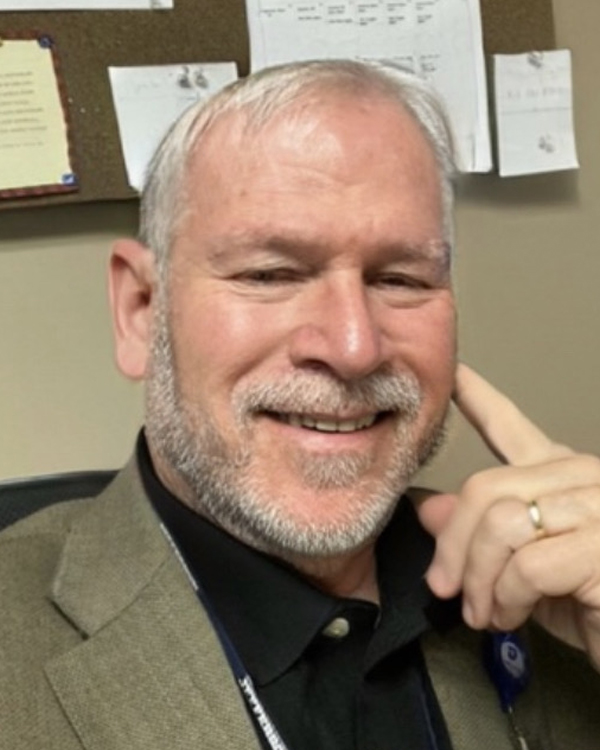
Meet Jay Barry
Rev. Jay Barry is a hospital chaplain in Philadelphia, and married to Barbara Barry. He was inducted as an Ordained Minister of the Swedenborgian Church of North America in 2024.

